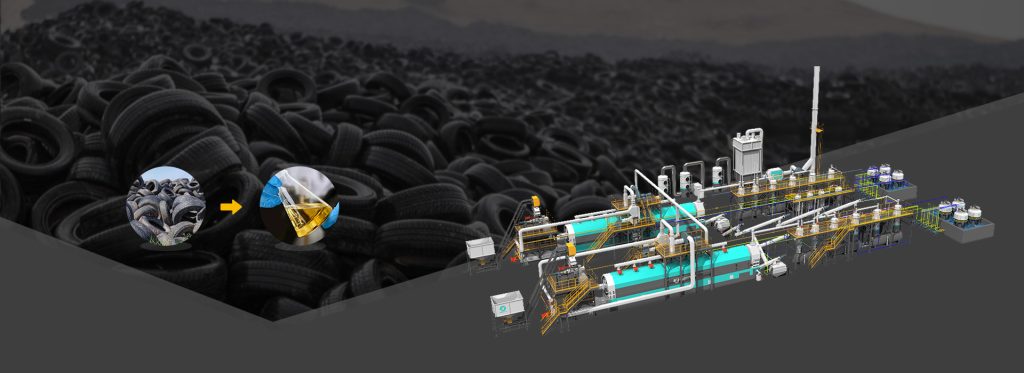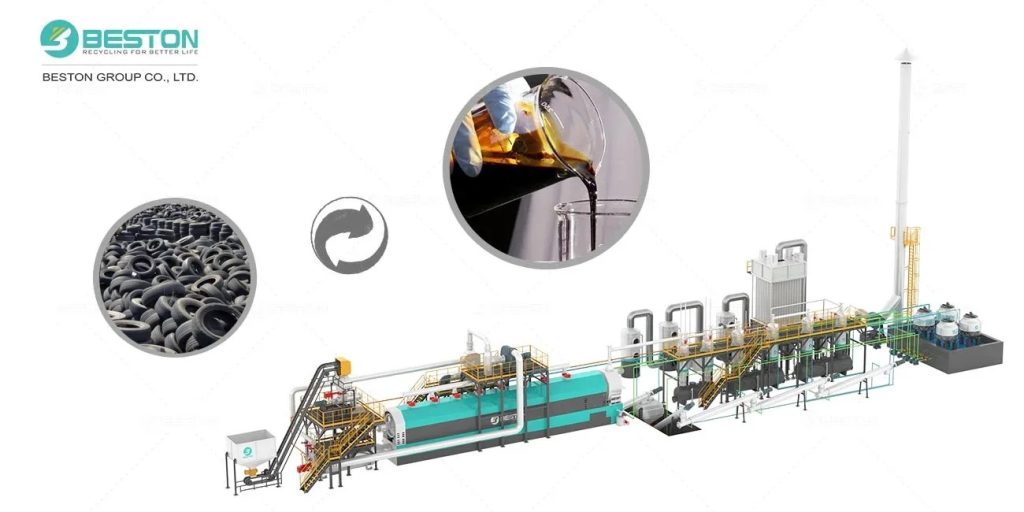With the increasing global demand for sustainable waste management solutions, tire pyrolysis machines have emerged as an innovative way to tackle the environmental challenges posed by end-of-life tires. These machines efficiently convert waste tires into valuable resources such as fuel oil, carbon black, and steel wire, promoting circular economy practices. By investing in pyrolysis technology, businesses and municipalities can contribute to environmental conservation while generating significant economic benefits.
The Growing Need for Tire Pyrolysis
Every year, millions of waste tires are discarded, causing severe environmental hazards such as pollution, land degradation, and fire risks. Traditional disposal methods, including landfilling and incineration, contribute to harmful emissions and soil contamination. Pyrolysis offers a viable alternative by breaking down waste tires into reusable materials, reducing environmental footprints while supporting a circular economy.
Learn more about tire pyrolysis machine here.
Waste Tires into Fuel: Tyre to Oil Plant
A tyre to oil plant utilizes the pyrolysis process to break down rubber molecules into useful byproducts. This plant enables businesses to recycle waste tires into pyrolysis oil, which can be used in various industries as an alternative fuel. By adopting this technology, companies not only reduce landfill waste but also create an additional revenue stream. Pyrolysis oil can be refined further into diesel or used directly in heating applications, making it a highly versatile product.
In addition to oil, the process also produces carbon black, which is widely used in the manufacturing of rubber, plastics, and ink. The steel wire extracted from waste tires can be recycled and repurposed, adding to the overall profitability of the process.
Discover how a tyre to oil plant works.

Choosing the Right Pyrolysis System: Batch vs. Continuous
When considering an investment in a pyrolysis plant, businesses must choose between batch pyrolysis plants and continuous tyre pyrolysis plants, each offering distinct advantages.
Batch Pyrolysis Plant
Ideal for small to medium-scale operations, a batch pyrolysis plant requires manual feeding and discharging, making it more cost-effective for startups or businesses processing limited quantities of waste tires. It offers flexibility and lower initial investment. Batch systems allow operators to run production in cycles, making them suitable for companies with fluctuating raw material availability.
Advantages of batch pyrolysis plants include:
- Lower investment costs
- Simpler operation and maintenance
- Suitable for businesses with varying production volumes
Find out more about batch pyrolysis plant.
Continuous Tyre Pyrolysis Plant
For large-scale operations, a continuous tyre pyrolysis plant is the best choice. This system features an automated feeding and discharging process, ensuring 24/7 operation with higher efficiency. Although it requires a larger investment, it significantly reduces labor costs and increases productivity, making it an ideal solution for enterprises aiming for long-term profitability.
Key benefits of continuous pyrolysis plants include:
- Higher efficiency with nonstop production
- Reduced labor costs due to automation
- Greater profitability over time
- Advanced emission control systems ensuring environmental compliance
Explore continuous tyre pyrolysis plant.

Environmental and Economic Benefits of Pyrolysis
The implementation of pyrolysis technology has numerous benefits, both environmental and economic. Some of the most significant advantages include:
Environmental Benefits
- Reduction of landfill waste: Diverts millions of waste tires from landfills.
- Lower carbon emissions: Prevents the release of toxic gases associated with traditional incineration.
- Resource conservation: Converts waste into valuable raw materials.
- Minimized soil and water contamination: Prevents harmful chemicals from leaching into the environment.
Economic Benefits
- Revenue generation: Businesses can sell pyrolysis oil, carbon black, and steel wire.
- Energy independence: Pyrolysis oil can be used as an alternative fuel source.
- Job creation: The industry supports employment in waste collection, processing, and refining.
- Government incentives: Many governments offer subsidies and tax benefits for eco-friendly initiatives.
Conclusion
Investing in a tire pyrolysis machine presents a lucrative and eco-friendly solution for tackling waste tire disposal. Whether opting for a batch or continuous system, businesses can benefit from cost savings, sustainable waste management, and profitable oil recovery. As global industries shift towards greener solutions, adopting pyrolysis technology is a strategic step toward a more sustainable future. By integrating innovative waste-to-energy solutions, industries can play a crucial role in reducing pollution, conserving resources, and fostering economic growth.